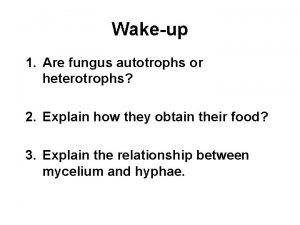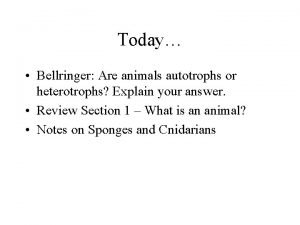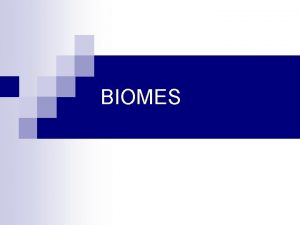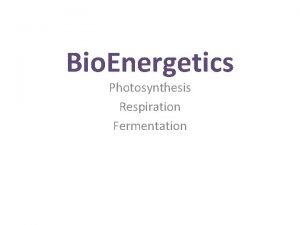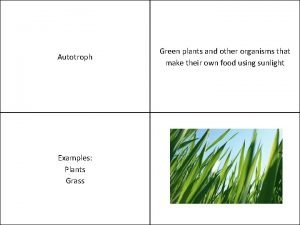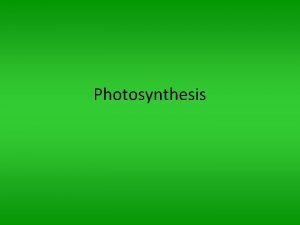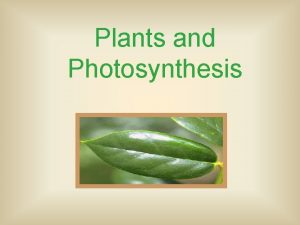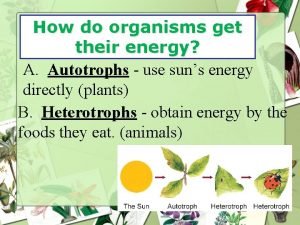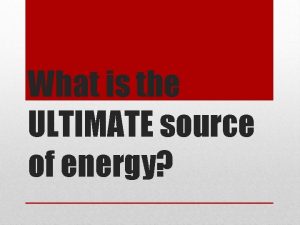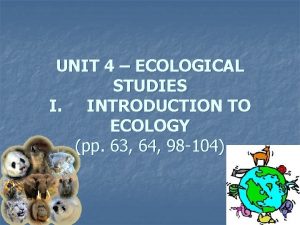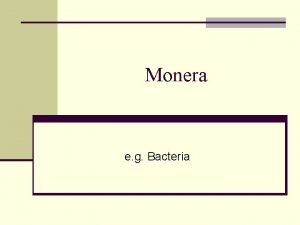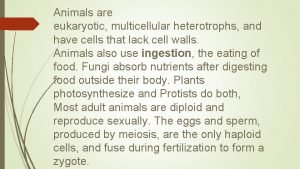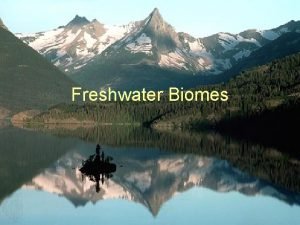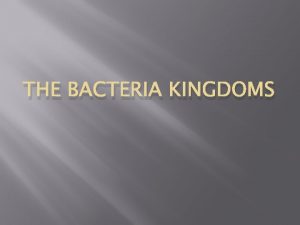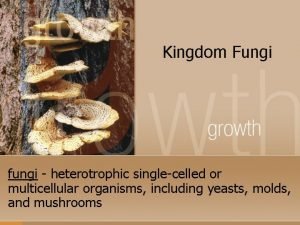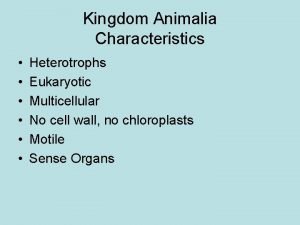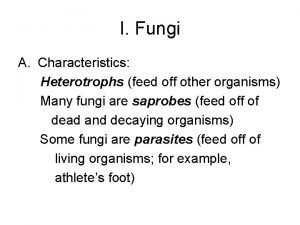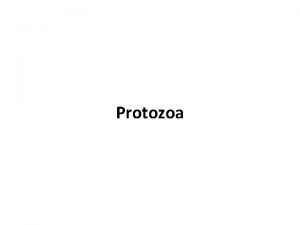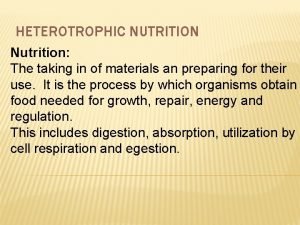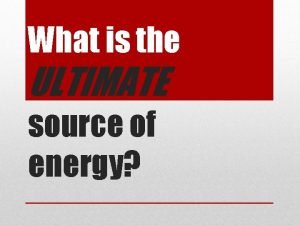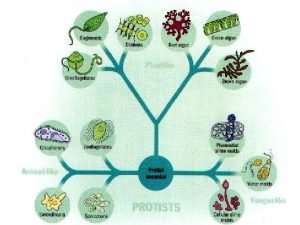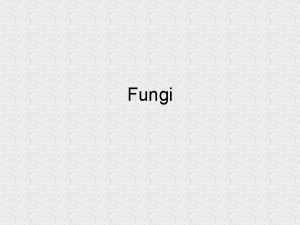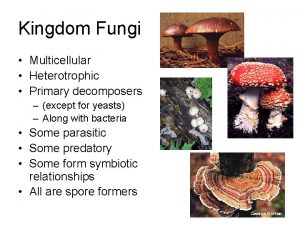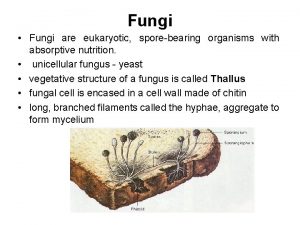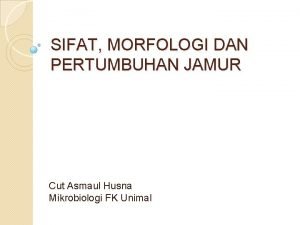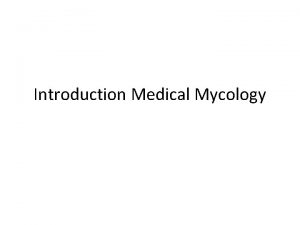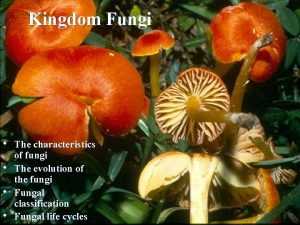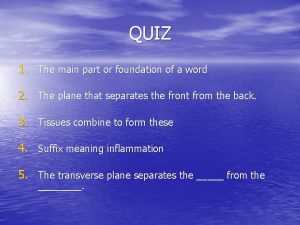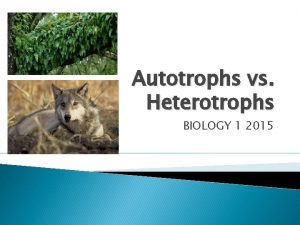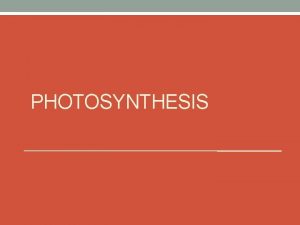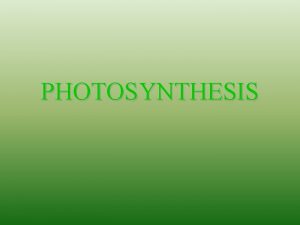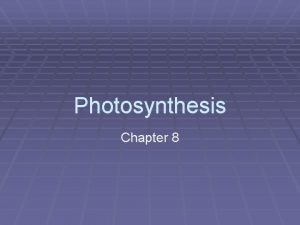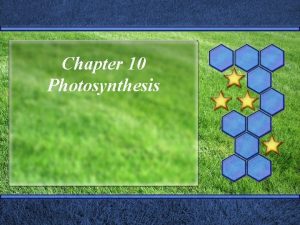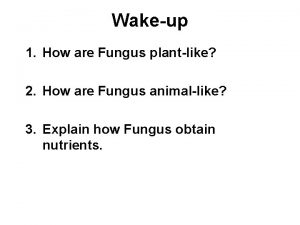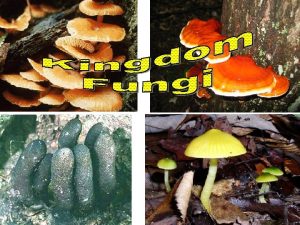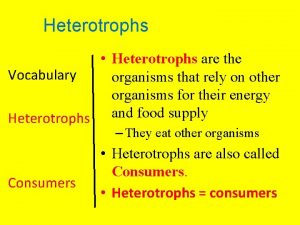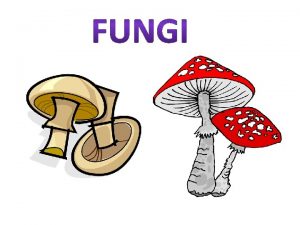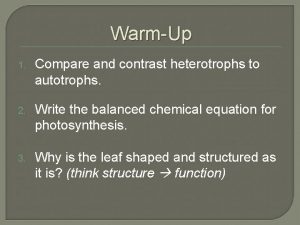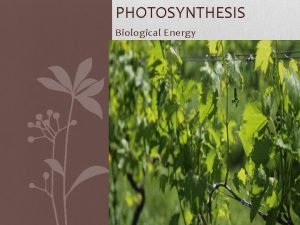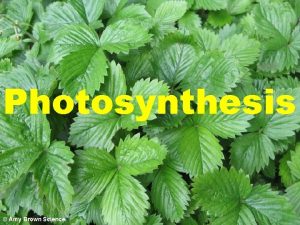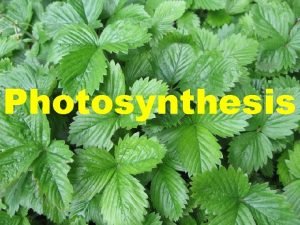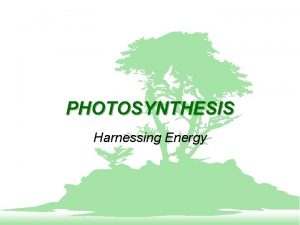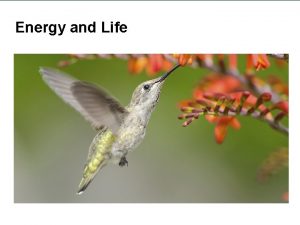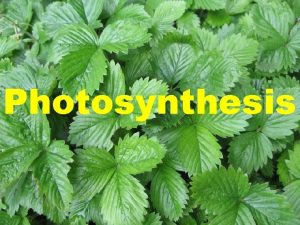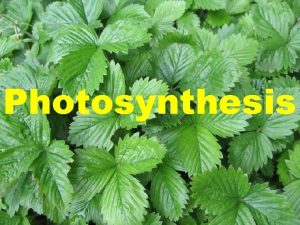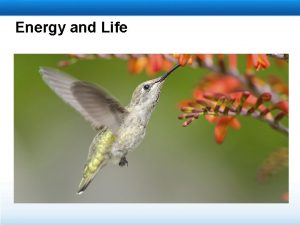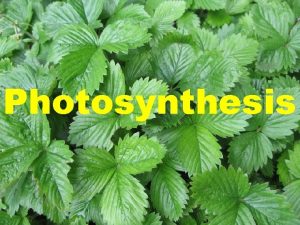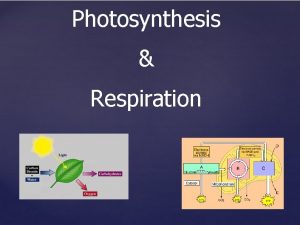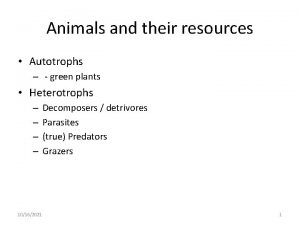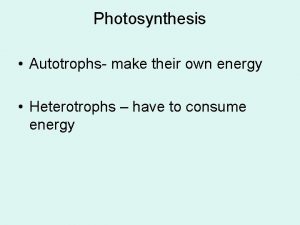Wakeup 1 Are fungus autotrophs or heterotrophs 2








































- Slides: 40

Wake-up 1. Are fungus autotrophs or heterotrophs? 2. Explain how they obtain their food? 3. Explain the relationship between mycelium and hyphae.

Plant Anatomy and Physiology

Early Plant Ancestors

All were Aquatic

Phytoplankton: Green Algae Unicelluar; Multicellular; Colonial (many individual organisms living together in a outer membrane)

Most diverse group of protists; can be found everywhere

Even on the backs of some animals

Green Algae Structure Stipe: Holds plant upright Chloroplast Cell Wall Rhizoid: Anchors algae Vacuole

Chloroplast Stem Cell Wall Leaf True Roots Vacuole

What did plants have to do to make the move to land? Put down Roots

Green Algae Structure Stipe: Holds plant upright Algae absorb the water they need from surrounding; rhizoids anchor Rhizoid: Anchors algae

What did plants have to do to make the move to land? Develop a functional stem

Green Algae Structure Stipe: Holds plant upright Algae absorb what they need from their surroundings; Water holds them upright Rhizoid: Anchors algae

What did plants have to do to make the move to land? Prevent water loss

Green Algae Structure Stipe: Holds plant upright Algae live in water; no need to control water; absorb what they need Rhizoid: Anchors algae

What is the function of Roots?

What is the function of Roots? • Absorb water and nutrients throughout the plant. • Structure and support

Two types of roots: Fibrous Many lateral roots branching from one main point

Two types of roots: Tap One main root; lateral roots extending from the tap root

What type of root? Fibrous

What type of root? Tap

What is the function of stems?

What is the function of stems? • Stems are the main highway for the transport of glucose and water. • Vascular tissue makes up core of stems.

Plant tissue: Vascular • Location: Core of the stem

Plant tissue: Vascular • Function: Transports glucose and water throughout plants

Components of Vascular Tissue: Phloem • “Phloem down below em” • Transports glucose down throughout the plant. • Glucose is made in the leaves of a plant.

Components of Vascular Tissue: Xylem • “Xylem to the skylem” • Vascular tissue is used to transport materials throughout the plant. • Xylem transports water up throughout the plant

What is the function of leaves?

What is the function of leaves? • Leaves are the site of photosynthesis. • Photosynthesis is the process in which plants capture energy from the sun and carbon dioxide to make glucose

Leaf Structure Stem

Leaf Venation: • Net venation: veins are spread out on the blade in a net. Like the network of veins in our bodies. • Parallel venation: veins are lined side by side (parallel) on the blade.


Cuticle • Found on the top side of leaves • Waxy outer layer which prevents water from leaving the cell

Stomata • Found on the underside of leaves • They are tiny openings that allow water and gases to move in and out the leaf.


Plant Tissue: Dermal • Location: Outer most layer of tissue. • Function: Prevent water loss and protection

Plant Responses: Phototropism* • Plants response to light. • Leaves will bend toward the light to maximum photosynthesis.

Gravitropism • Plants response to gravity • Positive Gravitropism: Roots grow down • Negative Gravitropism: Stems grow against gravity


Thigmotropism • Plants response to touch • Life: Plants 4: 00
 How do heterotrophs and autotrophs differ
How do heterotrophs and autotrophs differ Are fungi autotrophs
Are fungi autotrophs Are animals autotrophs or heterotrophs
Are animals autotrophs or heterotrophs Fungi parts
Fungi parts Owl food web
Owl food web Is eubacteria terrestrial or aquatic
Is eubacteria terrestrial or aquatic Atp formula cellular respiration
Atp formula cellular respiration Antigentest åre
Antigentest åre Phylum name
Phylum name The six kingdoms
The six kingdoms Primary consumer examples
Primary consumer examples Autotrophs
Autotrophs Light reactions photosynthesis
Light reactions photosynthesis Cellular respiration equation
Cellular respiration equation The ultimate source of energy in food is
The ultimate source of energy in food is Ecosystems interactions
Ecosystems interactions Monera bacteria
Monera bacteria Multicellular heterotrophs
Multicellular heterotrophs Freshwater biome precipitation
Freshwater biome precipitation Are archaebacteria heterotrophs
Are archaebacteria heterotrophs Ingestive heterotrophs
Ingestive heterotrophs Are fungi multicellular or unicellular
Are fungi multicellular or unicellular Eukaryotic heterotrophs
Eukaryotic heterotrophs Ingestive heterotrophs
Ingestive heterotrophs Parasitic heterotrophs
Parasitic heterotrophs Animalia characteristics
Animalia characteristics Heterotrophs
Heterotrophs Unicellular heterotrophs
Unicellular heterotrophs Example of heterotrophs
Example of heterotrophs Primary consumer
Primary consumer Are protists polyphyletic
Are protists polyphyletic Parasitic heterotrophs
Parasitic heterotrophs Fungi are also called multicellular decomposers
Fungi are also called multicellular decomposers Fungi in industry
Fungi in industry Mucormycosis ppt
Mucormycosis ppt Morfologi microsporum gypseum
Morfologi microsporum gypseum Fungus
Fungus Blackberry picking analysis
Blackberry picking analysis Is yeast multicellular or unicellular
Is yeast multicellular or unicellular Kingdom fungi characteristics
Kingdom fungi characteristics Mycosis a suffix denoting an abnormal condition of fungus
Mycosis a suffix denoting an abnormal condition of fungus

